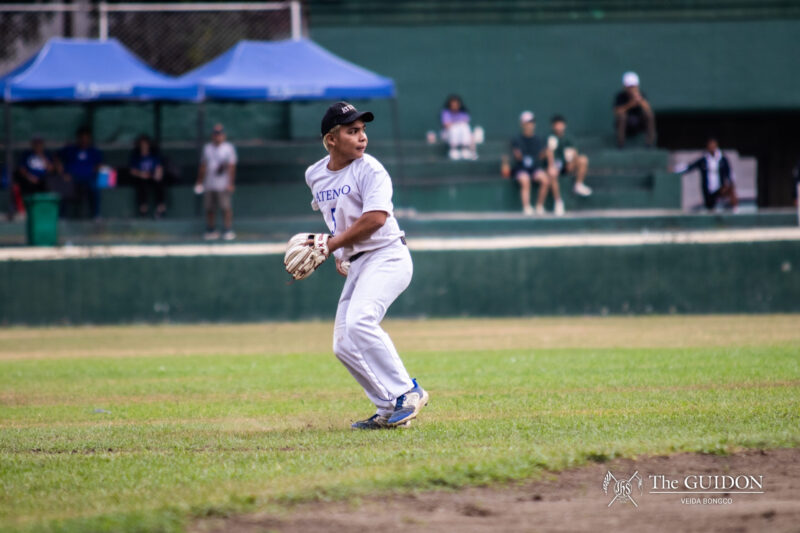STUDENT-ATHLETES transferring to different schools is a reality that comes with competitive inter-collegiate sports. Each student-athlete has their own reasons for moving to another university, whether it is to pursue a different degree, to seek more playing time, or to start fresh in a new environment. While transferring can be beneficial for a player, athletes enrolled in the University Athletic Association of the Philippines (UAAP) member schools pay a hefty price for moving because of the residency rule. According to the residency rule, student-athletes must sit out one year of residency while also using up a playing year when transferring from one UAAP school to another.
With more players transferring in the aftermath of the University of Santo Tomas (UST) Men’s Basketball Team’s controversial bubble, the current UAAP transfer rules are thrust into the spotlight. Despite some of the UST players opting to move to other UAAP schools, others transferred to schools participating in other leagues such as the National Collegiate Athletic Association (NCAA) to preserve a year of eligibility. Thus, it is imperative to discuss whether the UAAP’s transfer rules are still justifiable.
The residency rule
The intricacies of the residency rule must first be identified as the exact provisions of the rules are quite complex. The first provision is that a UAAP student-athlete who wishes to transfer to another UAAP school will lose one year of eligibility to the residency requirement. This was evidenced by former Green Archer Ricci Rivero’s transfer to the University of the Philippines. Meanwhile, if a student-athlete wishes to transfer to a non-UAAP school or vice versa, they must only undergo a year of residency without exhausting a year of eligibility, as seen in former Blue Eagle CJ Perez who moved to Lyceum of the Philippines University.
However, there are some exceptions that do not require student-athletes to abide by the residency rule. According to UAAP Season 82 President Emmanuel Fernandez, one exception is when a student-athlete transfers due to the dissolution of their originating team. “There is a provision [in the] UAAP rules [that] if a team is disbanded or discontinued, the athlete can transfer to any UAAP school and will not serve residency,” he said.
Another exception is the Troy Rike Rule, which allows a student-athlete pursuing a master’s degree to forego the year of residency. However, this rule only applies to graduate transferees from non-UAAP schools who hold Filipino citizenship. On the other hand, graduate transferees from UAAP schools and non-Filipino transferees from non-member schools are still subject to the residency rule.
Effects of the residency rule
The provisions for the residency rules are oftentimes perceived as detrimental to the longevity of a student-athlete’s collegiate career. However, the intent of the rule is geared to benefit these student-athletes. According to Fernandez, the purpose of barring transferees from athletic competition for a year is to give them ample time to acclimate themselves to their new environment. “A [year] of residency is academic in nature. [A student-athlete] has to sit for one year to acclimatize with the new environment and to make sure that the documents are proper,” said Fernandez.
According to Fernandez, this nuance is also imposed to ensure that a player’s intention for transferring is for academic reasons and to discourage the poaching of student-athletes by other UAAP schools. “[The rule] is one way to make sure na kaya nag-tratransfer ang student (why a student transfers) is because of academic reasons and not because [the student-athlete] wants to jump from one program to another,” said Fernandez.
The issue of poaching came to the forefront in UAAP Season 82 after reports surfaced that UST’s Rhenz Abando was allegedly being recruited by other UAAP schools. In light of this, preventing the possibility of poaching with the residency rule is important as it stops unnecessary power shifts in the UAAP.
Fernandez also reiterated that these rules not only favor the schools, they also serve to protect the student-athletes from being labelled as mercenaries in collegiate sports. “All rules work both ways. It’s for the protection of the university and the student [from poaching],” said Fernandez.
While protection from poaching is beneficial for both the school and the players, the current provisions also affect the players adversely by reducing their ability to move away from an unfavorable situation. This is especially true for players who are in the twilight of their collegiate careers since using up a year of eligibility when transferring denies them a chance to showcase their talent.
Testaments to this are the cases of UST’s Abando and Brent Paraiso, both of whom transferred to the Colegio de San Juan de Letran Knights in the NCAA. Paraiso successfully preserved two years of eligibility, which he would have lost if he chose to transfer to a UAAP school for the second time. Meanwhile, Abando would have to use up one year of eligibility if he transferred to another UAAP school.
Necessary actions
With the residency rule presenting both positive and negative effects for UAAP schools and student-athletes, the UAAP board if the current provisions equitably safeguard their stakeholders. From the UAAP schools’ perspective, the rule has to stay because there would be more leeway for other member schools to poach student-athletes. On the other hand, student-athletes may disagree with the residency rule because it reduces their transfer options. Furthermore, serving a year of residency could adversely affect a player’s career, which is why using a year of eligibility when transferring to a UAAP school is excessive when imposed on student-athletes.
Ultimately, the movement of student-athletes between schools will always be inevitable. As players transfer from one school to another, the UAAP board needs to revisit the rules and identify whether the current transfer rules still prioritize the welfare of both member-schools and student-athletes equally.







